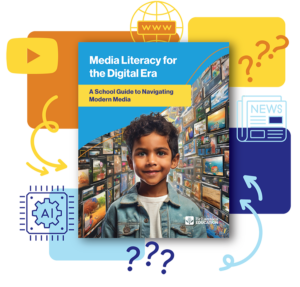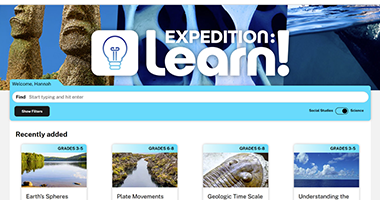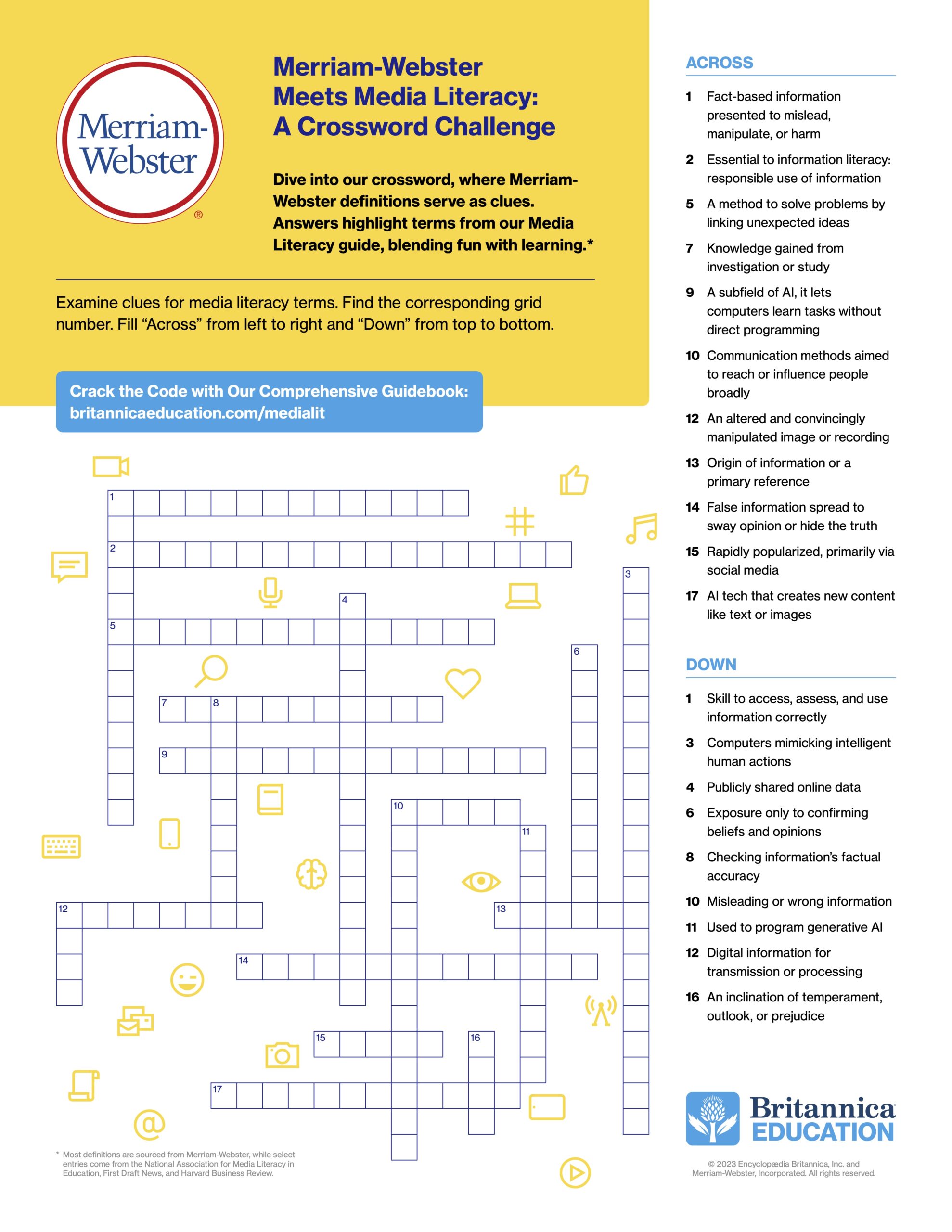Do you know the difference between disinformation and misinformation? Ever wondered about terms like “generative AI” or online “algorithms”? And what do people mean when they talk about their “digital footprint”? (It’s definitely not a reference to their shoe size!)
Trying to navigate today’s information avalanche can feel overwhelming, even for the most media-savvy among us. For educators who are leading the charge, the ability to master technical terminology in media literacy is not just helpful, but essential.
Let’s dive in and examine some key media literacy terms.
Word of the Day
Explore key media literacy terms, with definitions from Merriam-Webster. Review this vocabulary list with your students to enhance their understanding. Click each term to see its definition.
+ Deepfake
+ Disinformation
+ Echo Chamber
+ Generative AI
+ Lateral Thinking
See more terms in Britannica’s Media Literacy Guidebook
To make each word and definition effectively stick, try a “Word of the Day” activity in which you focus on one key term at a time, each with a real-world example. Practice makes perfect!
Classroom Activities to Help Media Literacy Terms Stick!
Once you’ve gone over the terms above, reinforce your student’s learning through the following interactive activities. Make sure students feel comfortable with these concepts and learn to think critically about the subtleties in modern media.
Activity 1
Make a Media Collage
Help students build a comprehensive understanding of various media forms as they critically evaluate how different sources present information and the potential impact on audiences.
- Introduce Project: Begin by overviewing the definition of ‘media’ and its various forms. Explain to students that media is designed to communicate messages and influence audiences.
- Collect Media: Ask students to spend a few days collecting examples of media, such as newspapers, magazines, screenshots of social media posts, advertisements, video thumbnails, etc.
- Create Collage: Instruct students to create a collage that represents the different forms of media they’ve collected. They should group similar media types together and label each section.
For a printed collage, provide students with large poster papers, glue, scissors, and markers, and have them clip their media collections. If you prefer to engage your students using a digital collage, tools like Canva or Google Slides work great! - Present and Reflect: Have each student present their collage to the class. As they spotlight their collection, encourage them to explain their thought process and discuss any patterns or trends they noticed. Conclude with a group discussion on how different media sources present the information and the potential effects on the viewer or reader.
Activity 2
A Crossword Challenge
How well-versed are your students in their media literacy vernacular? More than a test of vocabulary, Britannica’s Media Literacy Crossword is a fun challenge to help students engage in critical thinking, problem-solving, and broadening understanding.
- Introduce Activity: Begin by highlighting the importance of mastering media terminology. Discuss how a strong vocabulary is essential for insightful discussions about media content, sources, and impacts.
- Complete Crossword: Challenge students with our interactive crossword. As they solve, encourage them to use the glossary from Britannica’s comprehensive guidebook, where Merriam-Webster definitions assist in deciphering clues. This approach helps students familiarize themselves with media literacy terminology in a hands-on way. Ensure each student or pair has a copy of the glossary to aid them in solving the puzzle.
- Final Review: After completing the puzzle, facilitate a class discussion on the terms. Encourage exploration of challenging concepts, fostering a deeper understanding and curiosity.
Activity 3
Disinformation Detective
It’s time for some sleuthing! Guide your students through distinguishing between misinformation, disinformation, and malinformation by examining different pieces of content. Consider the reasons why information might be misleading and the impact it could have on public opinion.
- Introduce Project: Begin with a discussion on the definitions of misinformation, disinformation, and malinformation. Use real-world examples to illustrate each term.
- Detective Work: Provide students with different types of articles, memes, social media posts, or news clips (both digital and printed). These pieces should be a mix of misinformation, disinformation, and malinformation. Ask students to work in pairs or small groups to categorize each piece of content and justify their decisions.
- Discuss Together:After students have had time to analyse the content, have each group share their findings—end. End by reflecting on the importance of media literacy and the potential societal impacts of misleading information.

Help your students make sense of digital media in a post-AI world. Master media literacy jargon and more with Britannica’s free guide Media Literacy for the Digital Era: A Schools’ Guide to Navigating Modern Media.
Ready to take media literacy learning further? Sign up for the latest resources and insights from Britannica, to keep your class ahead of the digital curve.




